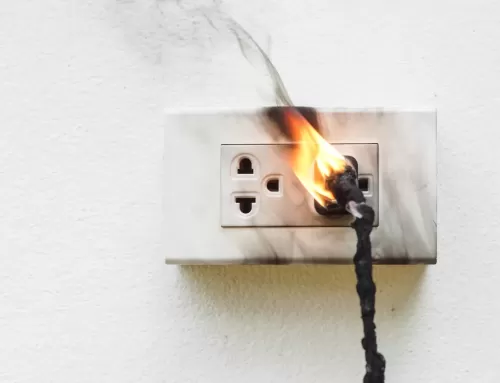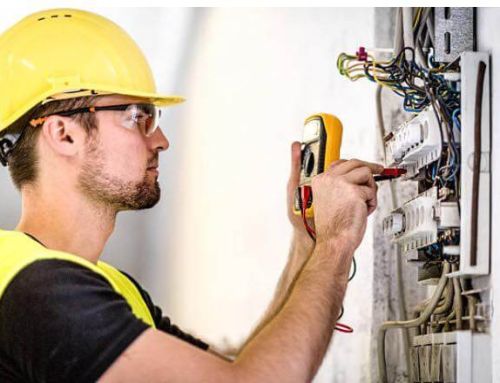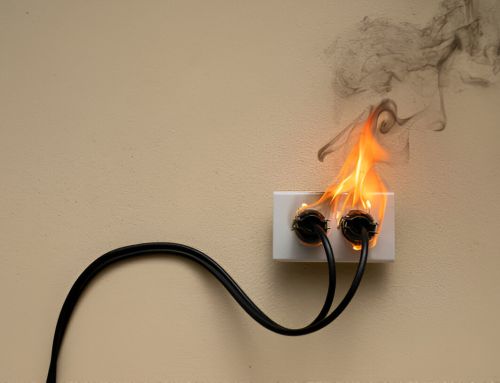
As I weigh the decision to move into a potential rental property, the question of whether a tenant can inhabit a space with an unsatisfactory Electrical Installation Condition Report (EICR) poses a significant dilemma.

The implications of residing in a property labeled as such raise concerns about safety and legal implications, prompting a deeper examination of the risks involved.
Understanding the gravity of an unsatisfactory EICR is paramount, and the steps to navigate this scenario can be complex and crucial for both landlords and tenants alike.
Understanding EICR and Its Importance
Why is understanding EICR and its importance crucial for property safety and compliance? As a landlord, it’s essential to grasp the significance of Electrical Installation Condition Reports (EICR) to ensure compliance with safety regulations and protect tenant rights.
EICR serves as a vital tool in identifying electrical hazards, damage, defects, and non-compliances within a property.
Regular EICR inspections, mandated every five years for landlords, not only uphold property compliance but also prioritize tenant safety.
Landlords must fulfill their responsibilities by promptly addressing any unsatisfactory EICR findings to maintain a safe living environment for tenants.
By comprehending the implications of EICR reports and taking necessary corrective actions, landlords uphold safety standards, mitigate risks, and safeguard tenant rights.
Prioritizing EICR understanding and compliance is fundamental in fulfilling landlord obligations and ensuring the safety and well-being of tenants within the property.
Decoding Unsatisfactory EICR Codes
Understanding the significance of decoding unsatisfactory EICR codes is imperative for promptly addressing electrical hazards and ensuring compliance with safety regulations in rental properties. When it comes to unsatisfactory EICR codes, the following key points should be considered:
- Tenant Rights: Tenants have the right to reside in properties that meet safety standards.
- Landlord Responsibilities: Landlords are responsible for ensuring that electrical installations are safe and compliant.
- Electrical Hazards: Identifying and rectifying electrical hazards promptly is crucial to prevent accidents.
- Safety Priorities: Safety should always be the top priority when dealing with unsatisfactory EICR reports.
- Compliance Regulations: Adhering to compliance regulations is essential to maintain a safe living environment for tenants.
Addressing Unsatisfactory EICR Reports

Addressing unsatisfactory EICR reports requires immediate action to rectify identified electrical hazards and ensure compliance with safety regulations in rental properties. Tenant rights dictate that landlords must promptly address any issues identified in the report to guarantee the safety of occupants.
Landlord obligations include completing necessary works within 28 days and providing confirmation of the remedial actions taken. Failure to adhere to safety compliance standards can have severe legal implications for landlords, potentially leading to rental restrictions or even prohibitions on housing tenants until the issues are resolved.
It’s imperative for landlords to prioritize tenant safety by promptly addressing and rectifying any electrical hazards highlighted in unsatisfactory EICR reports. By taking swift and decisive action to resolve identified issues, landlords can uphold their legal obligations, maintain safety compliance, and safeguard the well-being of their tenants within the rental property.
Estimating EICR Certificate Costs

Estimating the cost of an EICR certificate depends on factors such as property size and the age of the electrics. When considering the cost implications of obtaining an EICR certificate, several key factors come into play:
- Property Size: Larger properties may incur higher inspection costs due to the increased scope of electrical installations.
- Age of Electrics: Older electrical systems might require more thorough inspections, potentially leading to higher certification expenses.
- Safety Implications: Investing in an EICR is crucial to ensure the safety of occupants and comply with regulations.
- Landlord Responsibilities: Landlords have a legal obligation to provide safe living conditions, including conducting regular EICR checks.
- Electrical Hazards: Failure to address potential electrical hazards highlighted in the EICR report can pose significant risks to individuals and property.
Considering these cost considerations, it’s essential for landlords and property owners to prioritize the safety of their tenants by promptly addressing any electrical issues identified during the inspection procedures.
Recognizing Signs of Unsatisfactory Electrics
To ensure the safety of occupants and comply with regulations, recognizing signs of unsatisfactory electrics is crucial in maintaining a secure living environment. Tenant safety should always be a top priority, and being vigilant about potential electrical hazards is essential.
Landlords bear the responsibility of ensuring the safety of electrical installations within their properties. Signs such as light bulbs frequently not working, switches with weak contact or not functioning, power sockets sparking when in use, dark marks around power outlets or switches, and tripped fuses in the fuse box can indicate faulty wiring or other issues.
Taking safety precautions like promptly reporting these signs to landlords or property managers is crucial to address any potential hazards. Regular checks and immediate action upon noticing any signs of faulty electrics can help prevent accidents and ensure compliance with safety standards.
Choosing the Right Electrician for EICR
When selecting an electrician for an EICR, it’s crucial to prioritize licensed professionals with a track record of quality service and safety compliance.
- Electrician selection: Ensure the electrician is licensed and experienced in conducting EICRs.
- Safety standards: Confirm that the electrician follows all necessary safety protocols and regulations during inspections.
- Landlord responsibilities: Make sure the electrician understands the specific requirements for EICRs in rental properties.
- Immediate actions: Choose an electrician who can promptly address any unsatisfactory findings to ensure tenant safety.
- Reliable professionals: Opt for electricians with positive reviews and a reputation for delivering accurate EICR reports and necessary repairs.
Selecting the right electrician is paramount in maintaining a safe living environment and complying with legal obligations. By prioritizing expertise, adherence to safety standards, and efficient problem-solving abilities, landlords can ensure that their properties meet the necessary electrical safety criteria.
Frequently Asked Questions
Can a Tenant Legally Move Into a Property With an Unsatisfactory EICR Report?
As a tenant, I must prioritize safety. A property with an unsatisfactory EICR jeopardizes tenancy rights, risking electrical hazards. Landlords are responsible for ensuring property safety. It’s crucial to address issues promptly for tenant protection.
Are Landlords Required to Provide Tenants With a Copy of the EICR Report Before They Move In?
As a tenant, before moving in, I expect my landlord to provide me with a copy of the EICR report. It’s crucial for tenant rights and ensures transparency in property inspections, aligning with landlord responsibilities and enhancing electrical safety in rental agreements.
What Steps Should Tenants Take if They Discover Electrical Issues After Moving Into a Property With an Unsatisfactory Eicr?
Discovering electrical issues post-move-in with an unsatisfactory EICR warrants immediate action. Prioritize safety by promptly notifying landlords, seeking professional evaluation, verifying repairs, and ensuring compliance with safety standards. Tenant rights and legal recourse are crucial.
Can Tenants Request an Independent Inspection of the Electrical System if They Have Concerns About Its Safety?
When tenants have safety concerns about the electrical system, they can request an independent inspection. Ensuring transparency and verifying repairs are vital. Tenant rights include seeking reassurance on the system’s safety and holding landlords accountable for maintenance and compliance.
How Can Tenants Verify That the Necessary Electrical Repairs Have Been Completed Satisfactorily After an Unsatisfactory EICR Report?
To ensure safety post-unsatisfactory EICR, I recommend requesting repair confirmation from a qualified electrician. Verification process involves thorough electrical testing for compliance. Maintain safety standards with maintenance updates and inspection validation. Tenant rights mandate proper electrical upgrades.
Conclusion
In conclusion, it’s crucial for tenants to be aware of the implications of moving into a property with an unsatisfactory EICR. Understanding the codes, addressing reports promptly, estimating costs, recognizing signs, and selecting the right electrician are key steps in ensuring electrical safety.
By taking proactive measures and working together with landlords to rectify any issues, tenants can create a secure living environment and uphold necessary safety standards.



